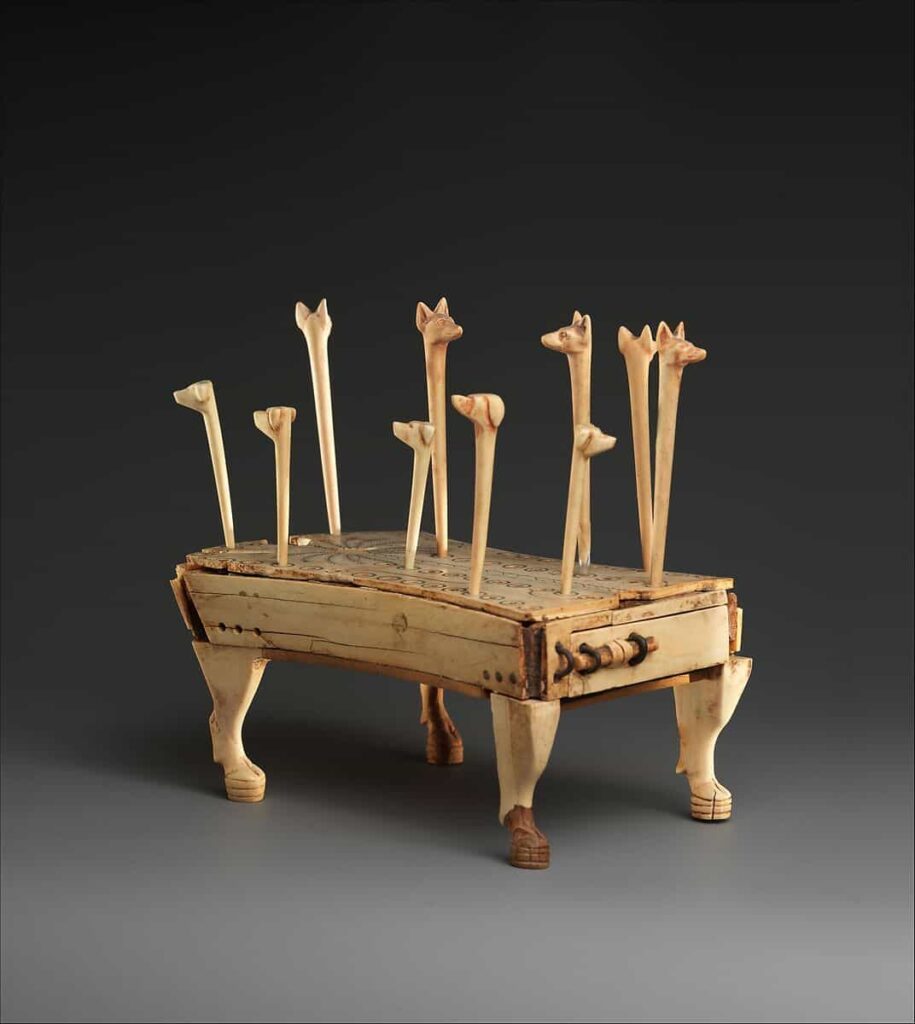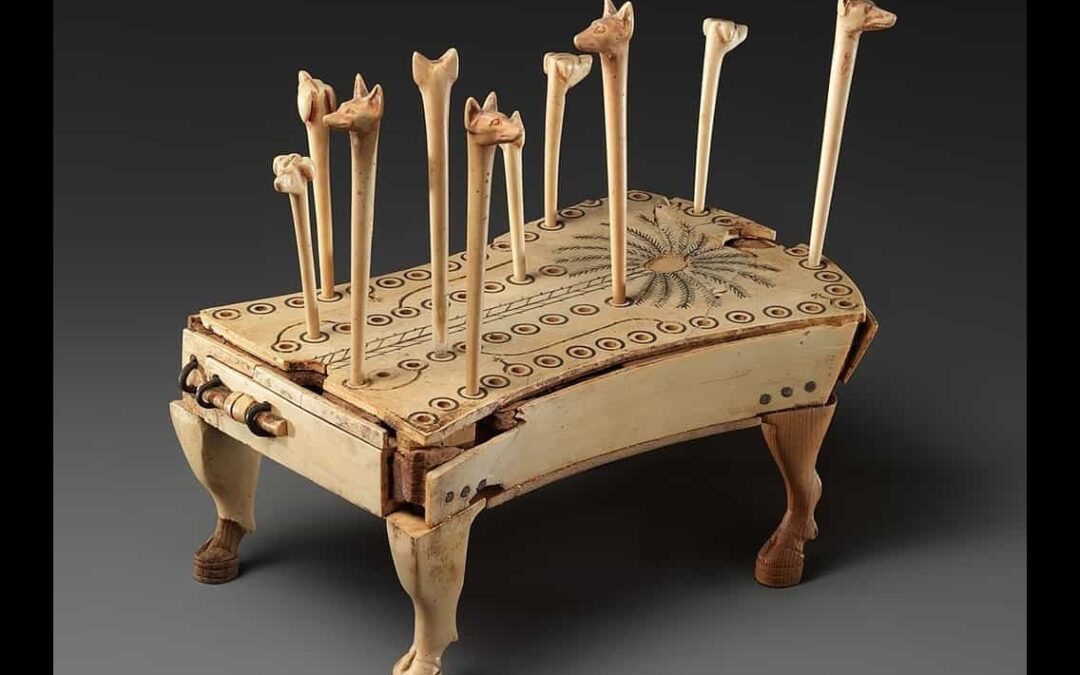The Game of Hounds and Jackals was an extremely popular pastime in ancient Egypt. Also known as the Game of Horses and Hounds, due to the figures represented, or the Palm Tree Game, due to the sgraffito drawing on the board, it consisted of a race between two players who moved several tiles at the same time.
For this, a perforated board with numerous holes was used, into which pegs topped with the heads of two different animals were inserted to differentiate the two opposing sides.
The example that we show here is especially sophisticated since it probably belonged to a noble personage. It is kept in the Metropolitan Museum in New York and was discovered by the famous archaeologist Howard Carter in the tomb of Reniseneb in Thebes in 1910.
It resembles a small piece of furniture made of sycamore wood and ivory. It is decorated with black and red paint to mark the holes and stylize the figure of a palm tree in the central part of the board.
The rules of the game are not clear, but it seems that it was a competition between two players who moved their respective pegs through opposite rows of holes according to the value marked on the dice.
The itinerary had to start from the inside, continue along the inner rows to the end, and finally fork through the outer ones until reaching the last hole located between the two rows.
According to this hypothesis, the player who managed to get all their pieces to the goal first won. Another possibility would be influenced by the unique characteristics of some of the holes, such as their color or width, which would allow a player to capture the opponent’s pieces.
All of these options would undoubtedly enhance the game’s features and motivations, as Howard Carter himself explained in an academic publication from 1912:
“Assuming that the shen symbol is the goal, we find twenty-nine holes on each side, or, including the goal, thirty. Between these holes, on each side, two are marked with the sign nefer (“good”), and another four are connected to each other by curved lines. Assuming that the holes marked ‘good’ would yield a profit, it would be logical that the others, connected by lines, would result in a loss. The moves could easily occur by chance or by rolling the dice, and if so, we have before us a simple but exciting game of chance.”
Recreational and leisure activities were a crucial part of life in Ancient Egypt. Numerous testimonies in this regard have been discovered in archaeological sites.
What’s most interesting is that they often appear in tombs, as an integral part of the burial goods for the deceased. This is because the ancient Egyptians symbolically understood the journey to the Afterlife as a game of chance that needed to be successfully overcome in order to achieve immortality.
Winning this race on the board implied obtaining the protection of the benevolent gods and, consequently, attaining the well-deserved eternal rest.








